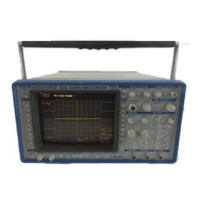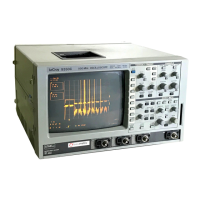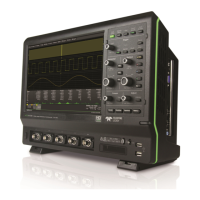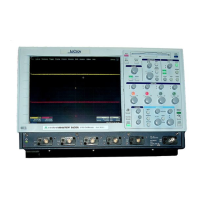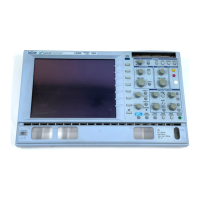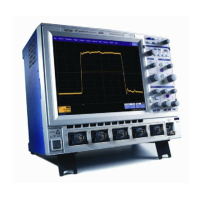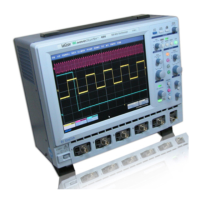Its highest point can be lower by 3.92 dB (1.57 times) when the source
frequency is half way between two bin frequencies. This variation of the
spectrum magnitude is called the Picket Fence Effect (the loss is called
the Scallop Loss).
All window functions compensate this loss to some extent but the Flat
Top window provides the best correction (see Table 11.3).
Power Spectrum
The Power Spectrum (V
2)
is the square of the Magnitude spectrum.
The 9400A displays the Powe~ Spectrum on the dBm scale, with 0 dBm
corresponding to (0.316 Vpeak)
Pover Density spectrum
The Power Density Spectrum (V2/Mz) is the Power Spectrum divided by the
product of the equivalent noise bandwidth of the filter and the
frequency bin width in Hz.
The 9400A displays the Power Density spectrum on the dBm scale, with
0 dBm corresponding to (0.316 Vpeak)-/Hz.
Sampling Frequency
In the 9400A the time domain records are acquired at sampling
frequencies which depend on the selected time base (consult Table 5.1).
Before FFT, the time domain record may be sub-sampled. If the selected
number of points is lower than the displayed record length (Table 5.1),
the total sampling frequency will be reduced.
The total sampling frequency equals twice the Nyquist frequency
(displayed in the FFT Redefine Menu).
Scallop Loss
Loss associated with the picket fence effect
windows implemented).
(listed in Table 11.3 for
11-19
Fast Fourier Waveform Processing
Option (WP02, V 2.06FT)
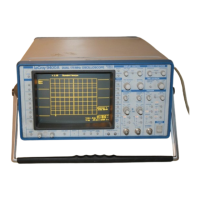
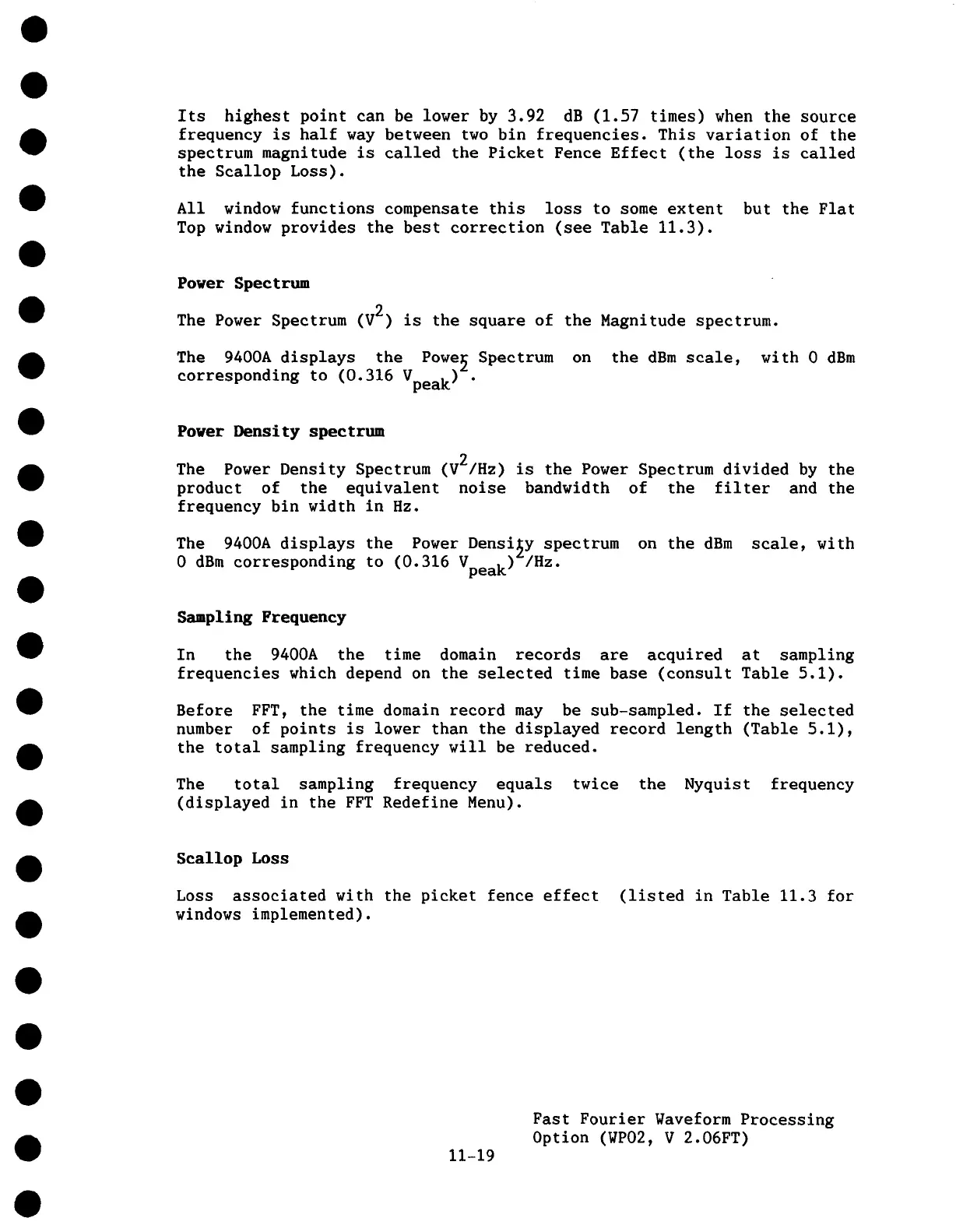